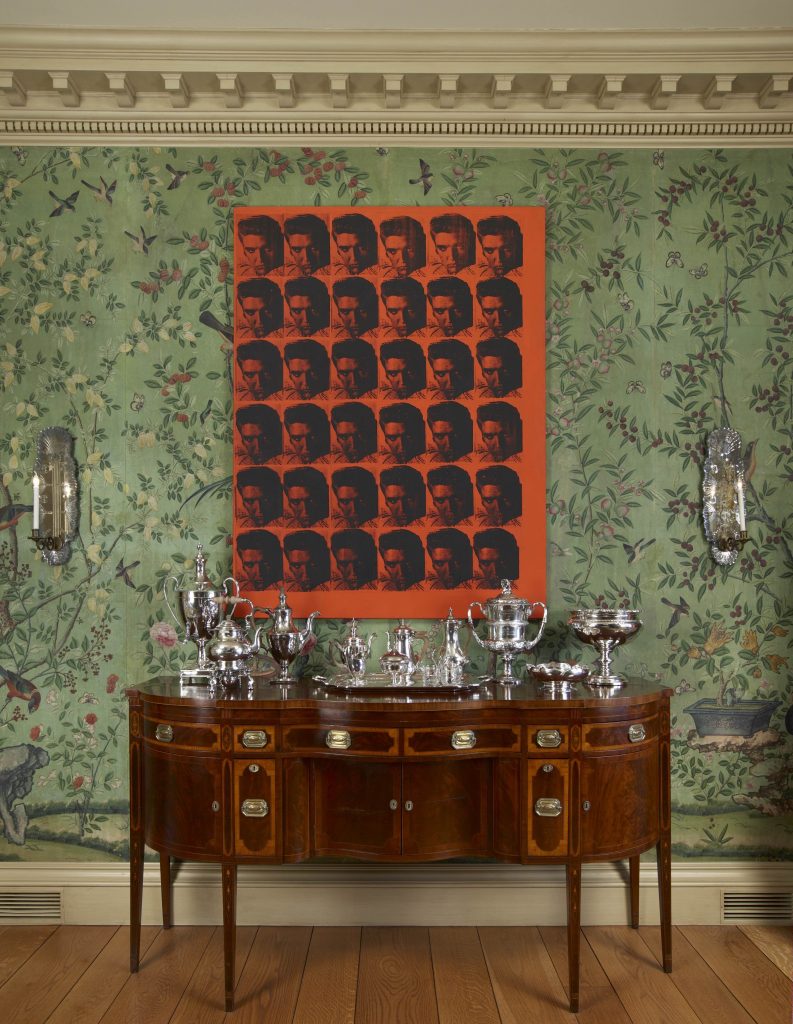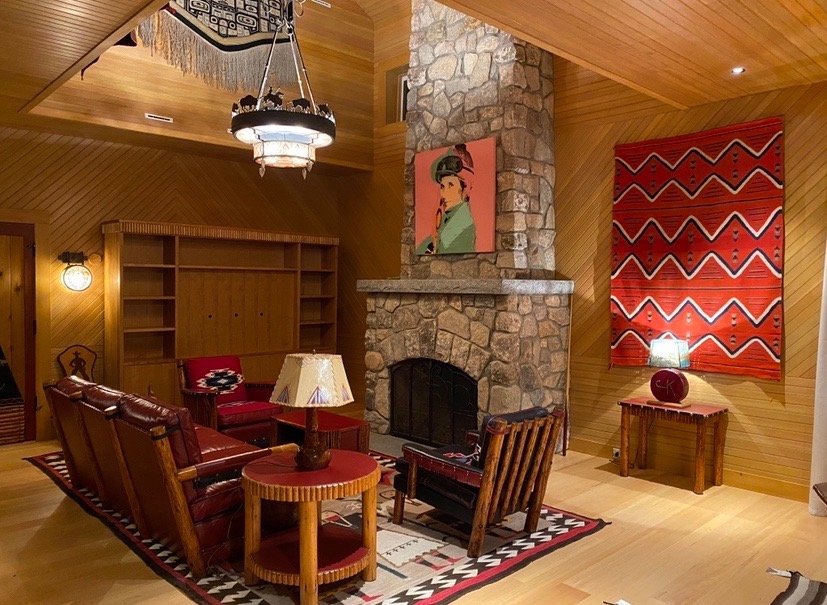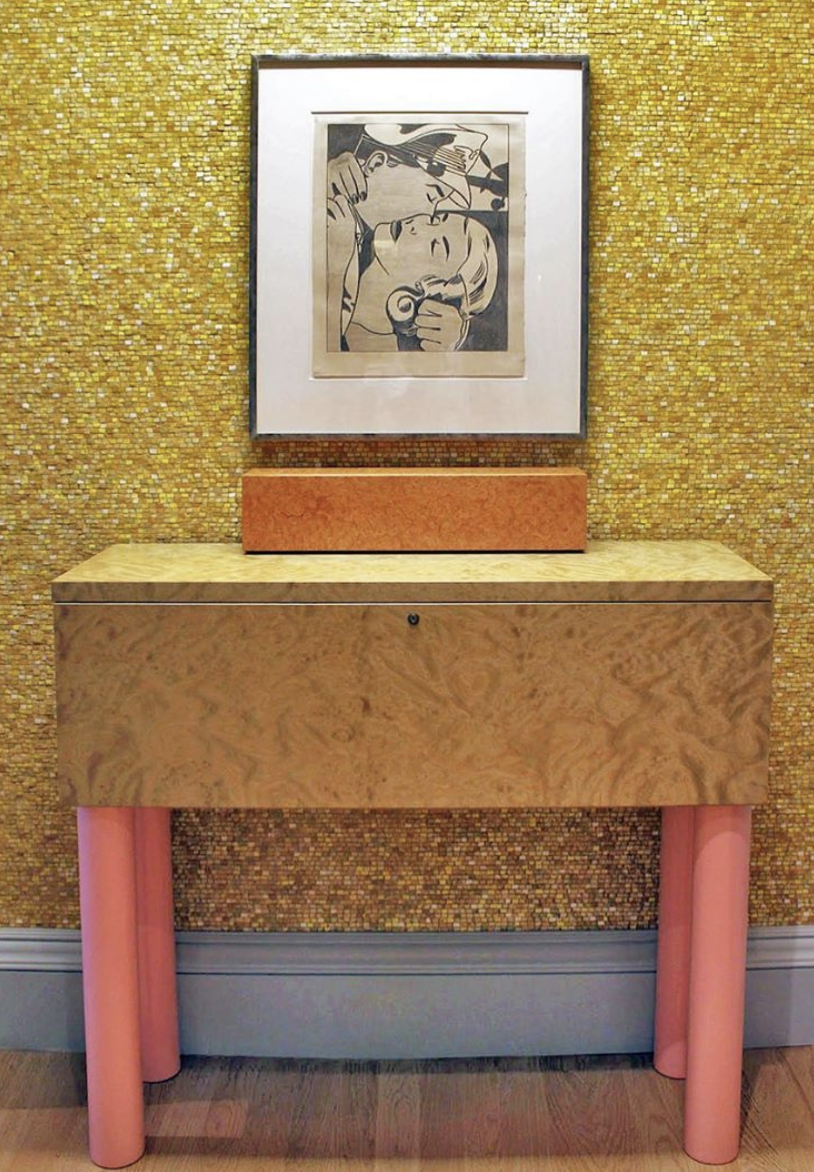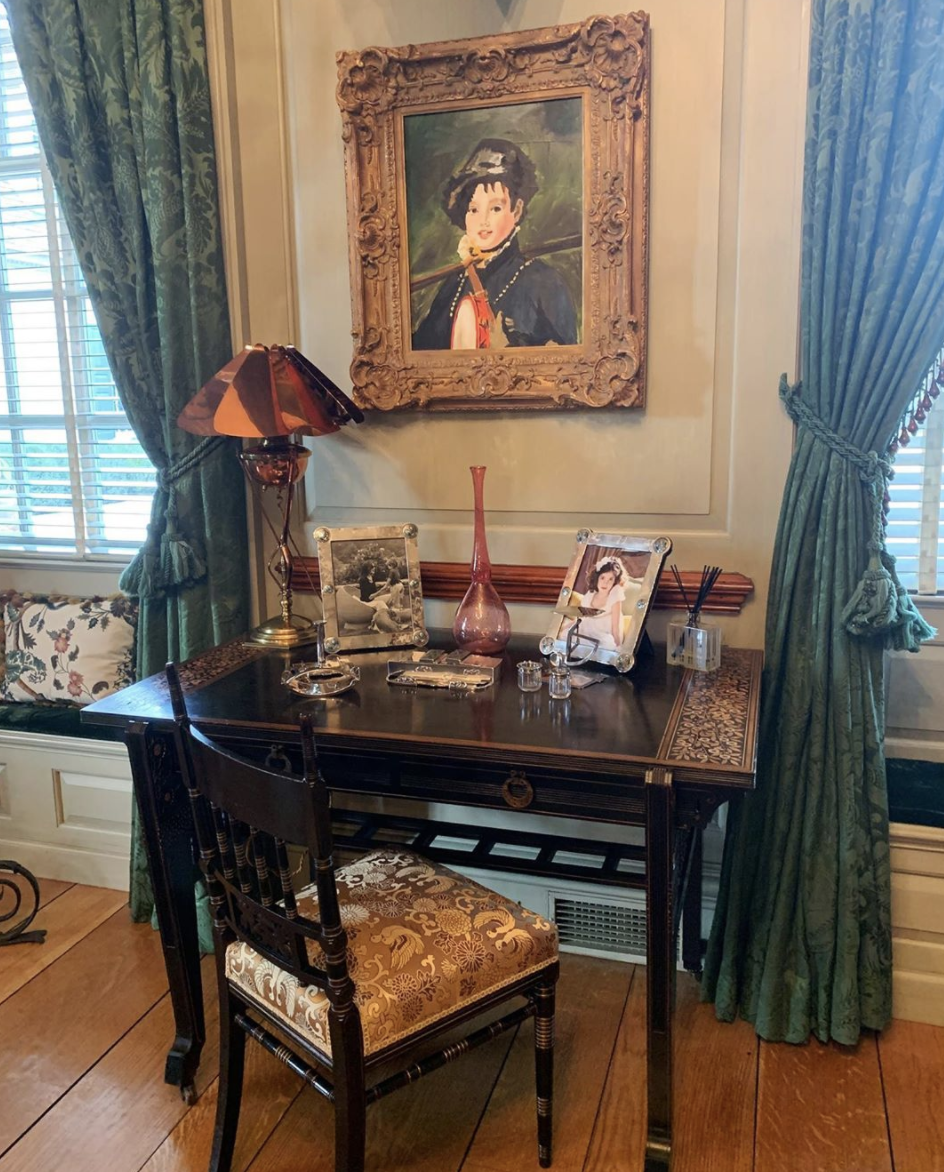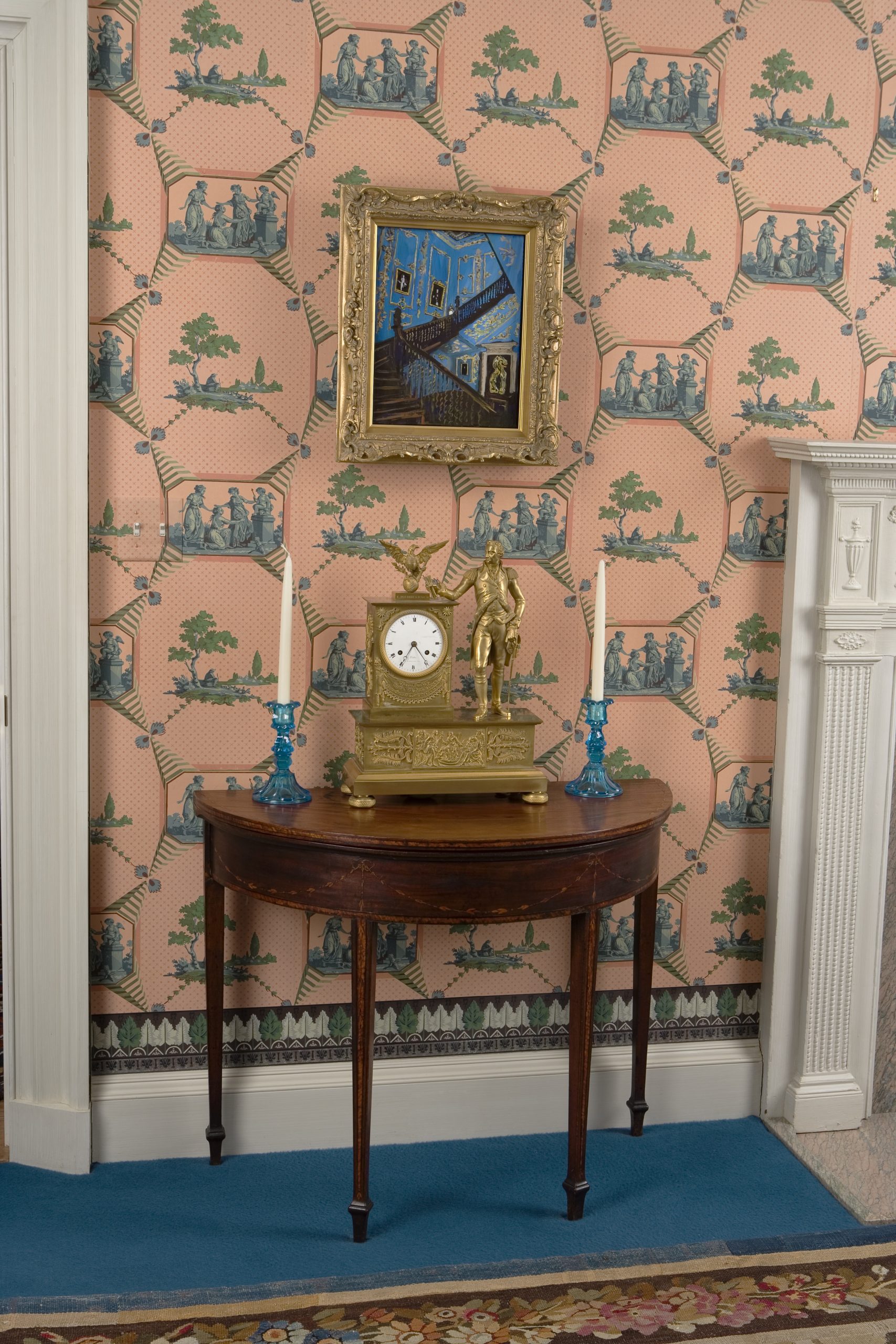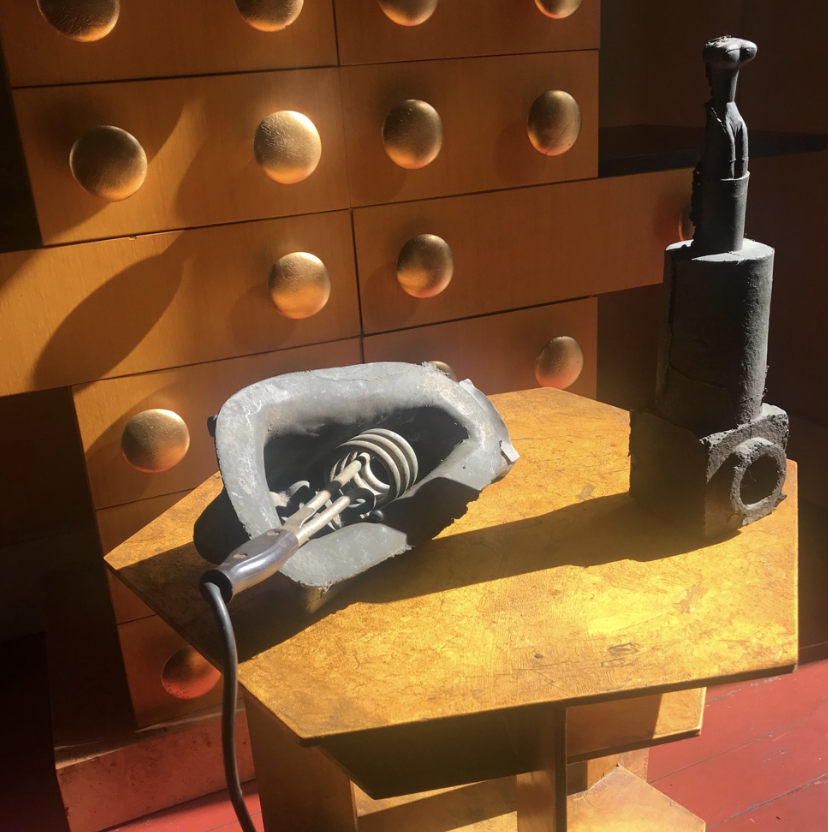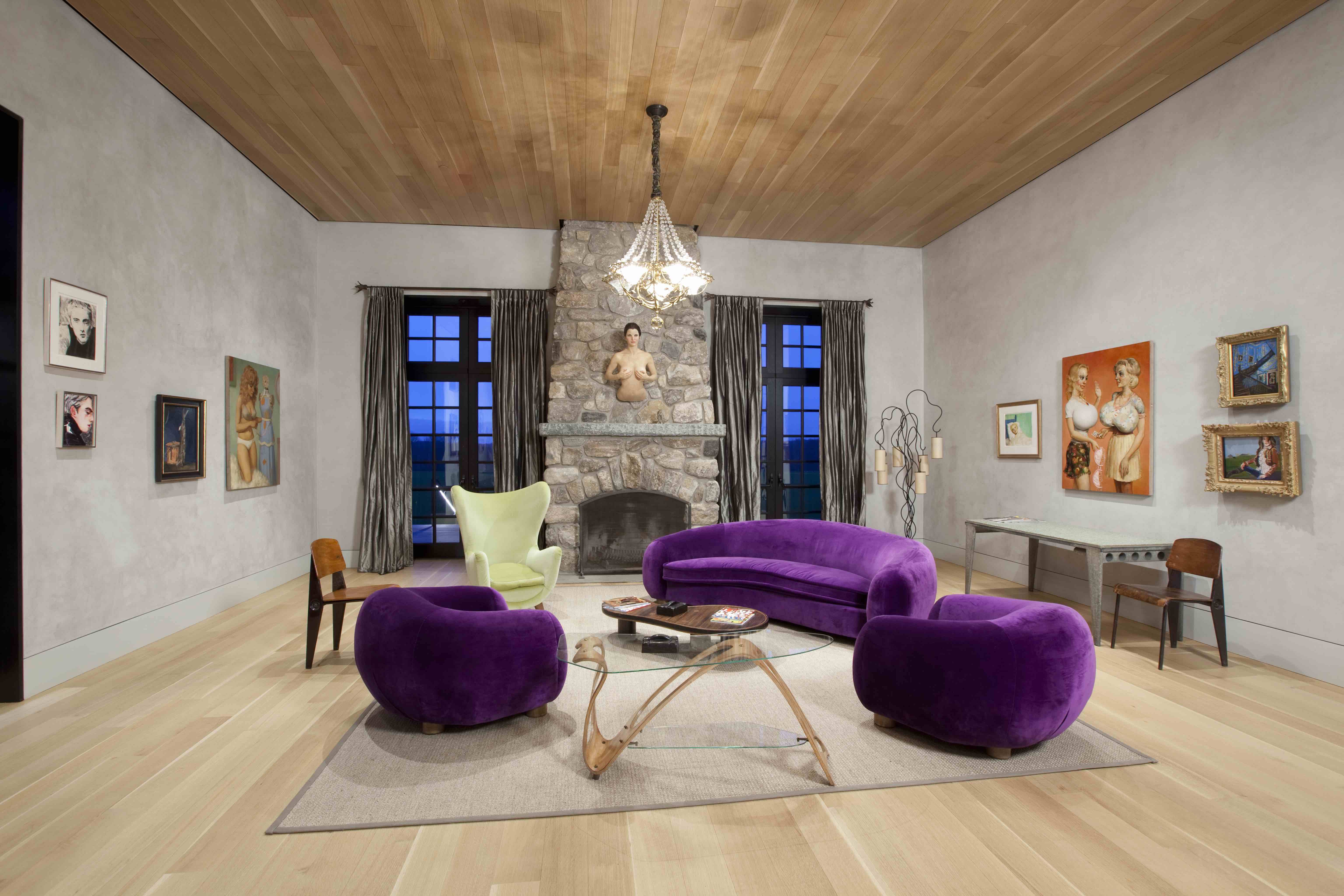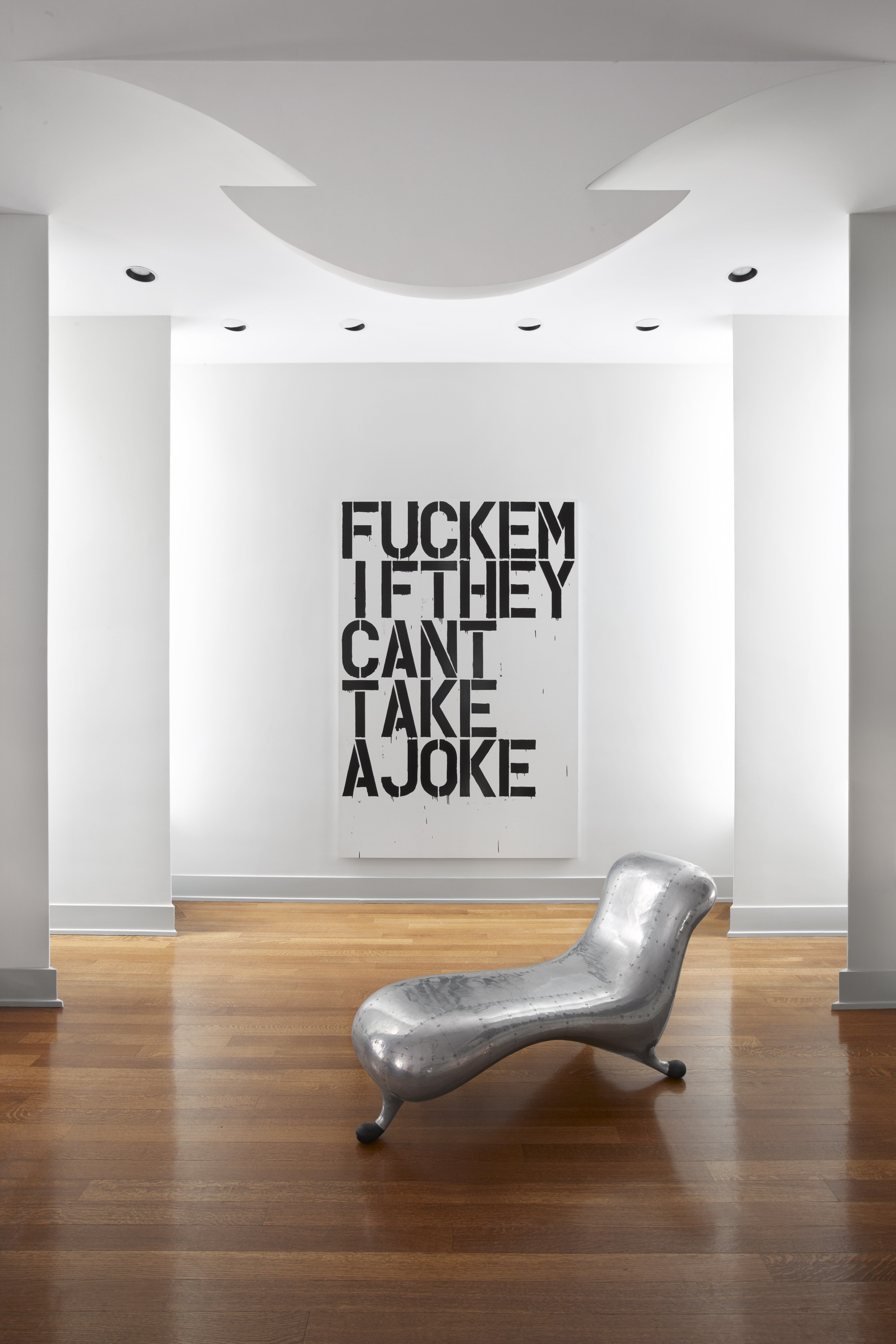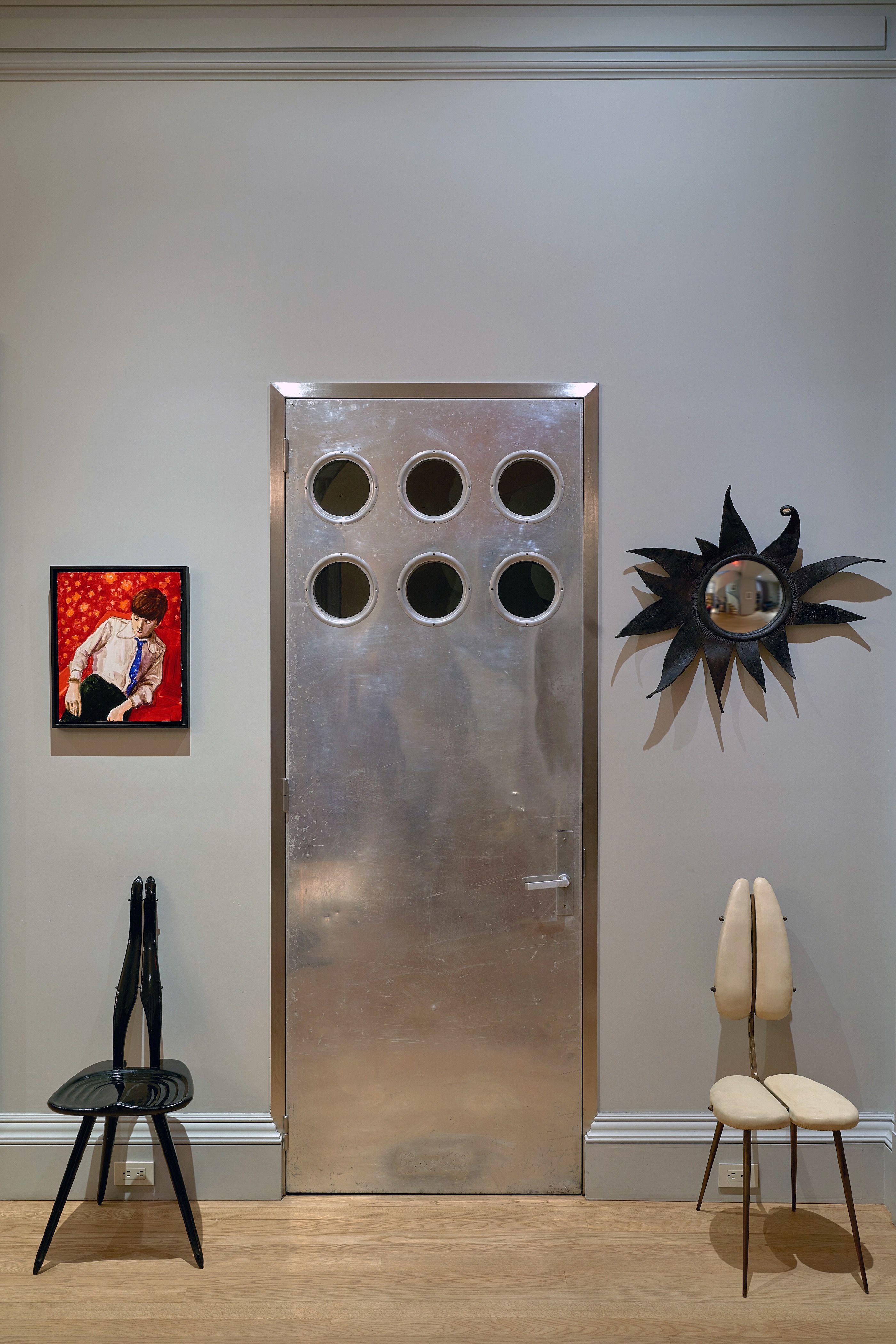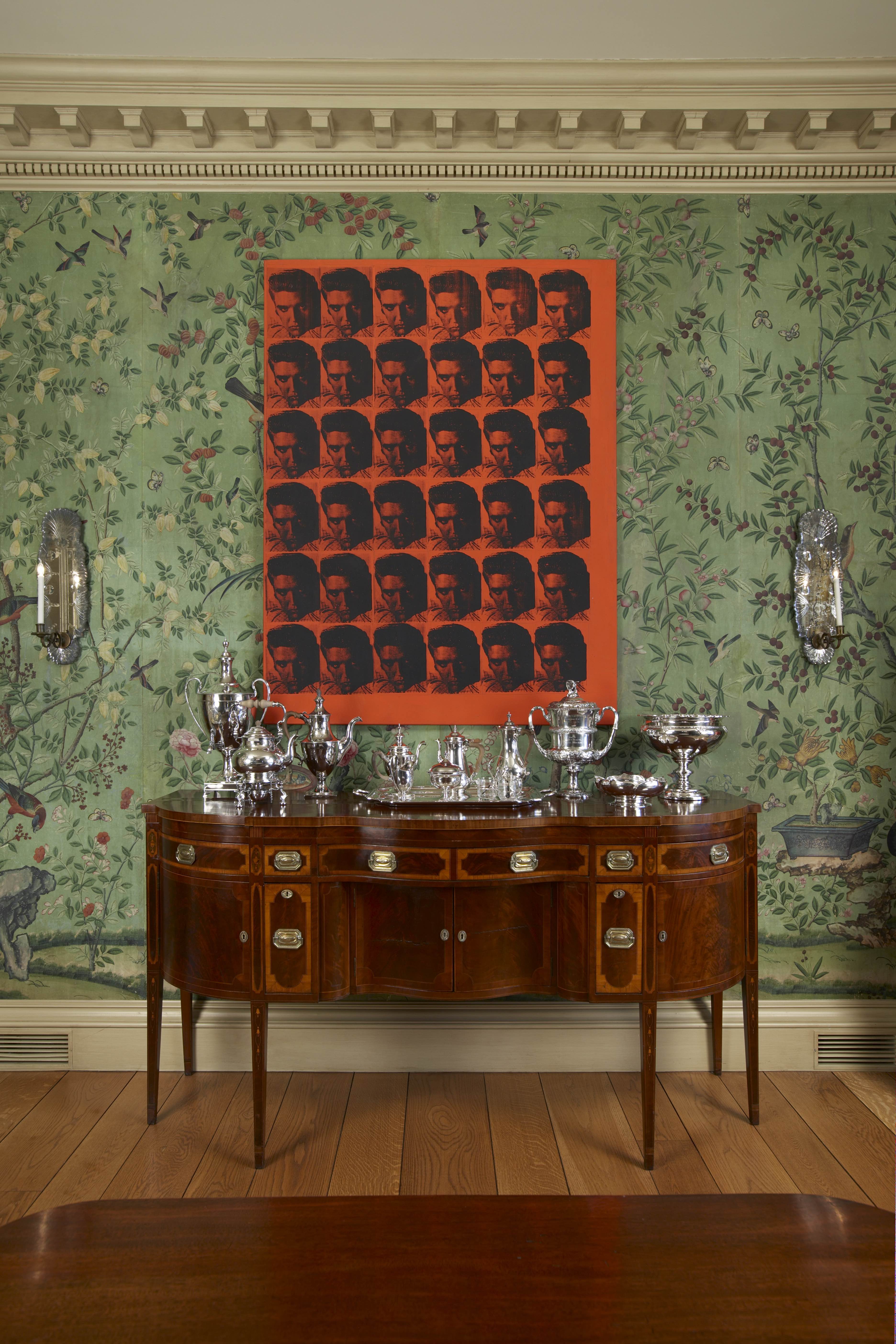Art Study Center
Decorative Art and Design
The Brant Foundation June 9th, 2018
Follow us on Instagram @thebrantfoundation #BrantDesign for decorative art and design updates!
Peter Brant, Founder of The Brant Foundation, has been an avid collector of art and design since the mid-1960’s. This life-long passion has resulted in a collection of important works of by contemporary art masters, as well as significant decorative art and design objects. Through featured online posts, The Brant Foundation broadens access to these historically noteworthy objects, furthering our mission to promote arts education by making resources available to the public.
Scroll down to view the archive of decorative art and design posts.
Thomas Molesworth
This #BrantDesign post features the work of Thomas Molesworth (1890-1977), one of the most prominent American cowboy style furniture makers. During his time at the Chicago Arts Institute, Molesworth was influenced by the Adirondack style, the Arts & Crafts movement, and the Art Deco movement, but what would ultimately become the basis for his style was the crudely made, functional type of furniture made by the cowboys of the American West. Molesworth used a variety of materials and techniques to achieve his iconic and refined style. From burled wood to half-pole trim, brass tacks and hide shades, colorful leathers and the incorporation of Navajo and Chimayo weavings; Molesworth furniture captures the essence of the American West in a variety of decorative arts objects ranging from furniture to lighting. Paired with his work are Navajo blankets from the late 19th century, and an Andy Warhol portrait of American Jockey Willie Shoemaker. #andywarhol #thomasmolesworth
Ettore Sottsass and Marco Zanini
This #BrantDesign post focuses on the Donau Desk, a collaborative piece between designers Ettore Sottsass and Marco Zanini, and produced by Franz Leitner. Its sleek wooden body sits upon four vibrant pink metal legs, typical of Sottsass’s Memphis design style. With his background in industrial design and as the founder of the Memphis Group, the Donau Desk is exemplary of Sottsass’s attention to design history as well as the playfulness within his furniture and design objects. Hidden within its lustrous shell, the desk opens like a secretary or drop front desk exposing a series of compartments, shelves, and a writing surface. Above the desk is Roy Lichtenstein’s iconic 1962 drawing for “The Kiss.” #ettoresottsass #roylichtenstein
Herter Brothers
This #BrantDesign post features works by the Herter Brothers who were considered top designers of the Aesthetic movement in America. The ebonized side chair and library table, with gold gilding and marquetry of flowers are exemplary of high-end design from this time period. The copper and brass table lamp is by William Arthur Smith Benson, an innovator of lighting design who focused on material, form, and function. The lamp features a shade of overlapping patinated copper plates, meant to diffuse, but also effectively reflect light. To its right, is a silver enamel and turquoise picture frame and a desk set with a blotter, scale, and jars designed by Archibald Knox for Liberty and Co., a company which played a large role in the development of both the Aesthetic and Arts and Crafts movements in England. Above the desk is Karen Kilimnik’s “Ian Playing Soldier” (1997), from the collection of @stephanieseymour, which was featured in the 2012 solo exhibition of Kilimnik’s work at The Brant Foundation Art Study Center in Greenwich.
Jean-Baptiste Dubuc
This #brantdesign post features a George Washington Mantel Clock by the Parisian clockmaker Jean-Baptiste Dubuc. This clock is one of the many examples of how European artisans after the revolution began to make objects intended for the new American market. Depicting an eagle which doubles as an American, but also Roman military symbol, the clock in true neoclassical form is portraying Washington in the likeness of the acclaimed Roman citizen-soldier Cincinnatus. Supporting the clock is a demilune mahogany card table made by the English born cabinetmakers John and Thomas Seymour of John Seymour & Sons, whose workshop was located in Creek Square, Boston. The table is in a Hepplewhite style and includes a delicate inlaid bellflower motif in the frieze and legs. The clock is flanked by two “electric” blue candlesticks produced by the Sandwich Glass Factory on Cape Cod, Massachusetts founded by Deming Jarvis, once a member of the New England Glass Company. The works are backed by a vibrant toile wallpaper and the painting above titled “The Castle Great Staircase, Scotland” (2007) is by Philadelphia native Karen Kilimnik. #thebrantfoundation #karenkilimnik
George III Stone Sphinxes
This design post features a pair of George III carved stone sphinxes located on the grounds of the Brant family home. Depicted in a Louis XIV Mannerist style, these stone carved sphinxes are classic renderings of the fabled creatures that for centuries stood as guardians for palaces, temples, and tombs. Each statue features a sphinx wearing a headdress with decorative foliage. Often shown with the head of a human, body of a lioness, and sometimes with wings, the sphinx saw a revival during the European Renaissance and Neoclassical movement where artists visually reimagined its form and retold stories such as the tale of Oedipus besting the sphinx by solving its riddle and freeing the city of Thebes.
A related Sphinx can be found on the Adams bridge of Compton Verney, Warwickshire, and countless examples can be found in museums and private collections worldwide.
Guest Post: Francesco Clemente
In this collaborative design post with artist Francesco Clemente, a warm glow reflects off the golden handles of a bureau designed by Ettore Sottsass, a longtime friend and collaborator of Clemente. Illuminating the plywood surface of a Frank Lloyd Wright side table, the light draws our attention to a bronze sculpture by Joseph Beuys, which contrast in color, texture, and material with the furniture. Together these works blur the lines between fine and decorative art, function and aesthetics.
Clemente was drawn to these works because of each artists’ desire to bring together eastern and western tradition as a way to “reconcile the opposites, reveal the one in the many, and unify East and West.” “Ettore Sottsass returned modernism to its roots, to Vienna, which he saw as the last outpost of the East. Frank Lloyd Wright looked East, to Japan, across the Pacific, from the American plains. Joseph Beuys hoped the East would heal the European wound and imagined a new continent, Eurasia.”
Featured in Frieze, Francesco Clemente wrote about this Beuys work and its influence on him saying, “Deep time, transformative energy, and feminine power all come together to remind us that art is not meant just to celebrate power and obedience. Art must undermine our present values and describe new ones, reinventing and recovering our sense of the sacred, or at least our sense of poetry and our timidity.”
#francescoclemente #brantdesign #franklloydwright #josephbeuys#ettoresottsass
1. Frank Lloyd Wright – Side Table from the John L. Rayward House – Plywood (1955)
2. Ettore Sottsass – Mobile Giallo Chest of Drawers for Design Gallery Milano (1988)
3. Joseph Beuys – Bathtub for a Heroine (left) – Bronze, steel and plastic – 1950 cast 1984
Remembering Henry's Show
This #BrantDesign post highlights an image from The Brant Foundation’s inaugural exhibition, Remembering Henry’s Show: Selected Works 1978-2008, featuring one of Carlo Molino’s most celebrated designs, the Arabesque Table. Originally designed in 1949 for Casa Oregno in Turin, Italy, its elegant curvature walks the line between ornamental and structural, maintaining a strong sense of stability and motion. Molino’s lifelong interest in automobiles and airplanes is mirrored in the tables flowing form, which is said to have been inspired by the surrealist works of artists such as Jean Arp and Salvador Dali. The shape of the glass top was derived from a tracing of a drawing of a woman’s torso made by Leonor Fini. Here, the table is accompanied by several iconic designs of Jean Prouve and Jean Royere, as well as an Arts and Crafts electrolier designed by W.A.S Benson.
Photography: Tom Powel Imaging, Inc.
Furniture: Arabesque Table, Carlo Molino (ca. 1949)
Pair of Standard Chairs, Jean Prouve (ca. 1934)
Brass Electrolier, W.A.S Benson (ca. 1900)
Refectory (camping) table with Streamer Legs, Jean Prouve (ca. 1939)
Pair of Ebony Boxes, Alexander Noll (ca. 1948-1950)
“Ours Polare” Two Armchairs and Sofa, Jean Royere (ca. 1946)
Liane Floor Lamp, Jean Royere (ca. 1950’s)
Elephanteaux Chair, Jean Royere (ca. 1939)
Table Basse Flaque, Jean Royere (ca. 1950’s)
Marc Newson's Lockheed Lounge
This #BrantDesign post features Marc Newson’s (b. 1963) iconic Lockheed Lounge. This remarkable object simultaneously encapsulates fine art and industrial design, reflecting Newson’s level of precision and unique creativity in the 1980’s furniture design movements. The result is an unusual, other-worldly structure revered for its fusion of materials, design, and form.
Marc Newson, Lockheed Lounge (1988)
Christopher Wool, Fuckem (1992)
Photography: Tom Powel Imaging, Inc.
Jean Prouvé, Carlo Mollino, Line Vautrin
This striking aluminum porthole door was designed by renowned metal worker and self-taught architect Jean Prouvé circa 1949 – a signature element in his post-WWII mass-production housing concept. Flanking the doorway, Carlo Mollino’s chairs embody functionality and the female form, while epitomizing Mollino’s style: the union of the romantic and the rational. The extraordinary “Folie” mirror, created by jewelry and decorative object designer Line Vautrin, presents a sun with twelve irregular flames haphazardly extending outward, one in particular supporting a tiny, witch mirrored glass “moon.” The asymmetrical bordure inside the mirror mimics the Prouvé portholes, while the black talosel flames balance the black Mollino chair to the left.
Jean Prouvé, Door (1949)
Carlo Mollino, Important side chair (1959) painted beech, painted brass
Carlo Mollino, “Tipo B” side chair (1950) Resinflex, brass, tibular brass.
Line Vautrin, “Folie” mirror (circa 1958)
Elizabeth Peyton, “John Lennon 1965 (Hotel),” 1995
Photography: Sean Keenan
In celebration of Father’s Day, this design post highlights the formal dining room which was originally designed with the assistance of Jed Johnson in the early 1980’s.
The beautiful American sideboard from the 1880’s was a housewarming gift given to Peter Brant by his father Murray Brant. The sideboard and accompanying dining set was chosen by Peter and had belonged to Robert W. de Forest, the fifth president of The Metropolitan Museum of Art. De Forest and his wife Emily, were great collectors of Americana and conceived the idea to build a wing at The Met that would house a permanent collection of American decorative objects. The Museum’s American Wing opened to the public in 1924.
18th Century Chinese Wallpaper: This wallpaper inspired Karen Kilimnik’s chinoiserie installation for her 2012 exhibition at The Brant Foundation.
Various silver horse racing trophies
“Red Elvis” (1962) by Andy Warhol
Photography: Tom Powel Imaging, Inc.
To celebrate the beginning of summer, our first post features objects collected by Stephanie and Peter Brant for their seaside home.
“Charlotte Perriand was a brilliant architect and designer who left a deep mark on the history of design and decorative arts. She, in the spirit of Oscar Wilde, believed that aesthetics and better functional design made a better society for us all. “ Peter M. Brant
Patinated Steel Disc Chandelier made by Paul Evans c. 1960s
Walnut dining table, with book-matched plank top joined by four rosewood butterfly joints on a Conoid base, and set of eight Conoid walnut chairs made by George Nakashima in 1976.
Candlesticks by Ettore Sottsass
Stools by Charlotte Perriand
Portrait of Stephanie and Lily Margaret, 2006 by Eric Fischl
Using his welding, metallurgy, and jewelry design skills, designer-craftsman Paul Evans (1931-1987) established a reputation as a creative designer of unique sculpted metal furniture. Constantly experimenting with new materials, technologies, and designs, his shop operated much like an industrial laboratory, and his highly innovative experimental approaches to metal have attracted an international following, especially over the past decade.
Read More:
Paul Evans: Crossing Boundaries and Crafting Modernism at Michener Art Museum
Paul Evans at Todd Merrill Studio
George Nakashima was born in Spokane, Washington in 1905 and grew up in the forests of the Olympic Peninsula. He received a Bachelor’s Degree in architecture at the University of Washington and a Master’s from MIT in 1930, as well as the Prix Fontainebleau from L’Ecole Americaine des Beaux Arts in France in 1928. After spending some time in Paris, he traveled around the world and secured a job at the Antonin Raymond office in Tokyo which sent him to Pondicherry, India, where he was the onsite architect for the first reinforced concrete building in that country and became one of the first disciples of Sri Aurobindo.
Read More:
George Nakashima Official Website
George Nakashima Woodworker Complex – National Park Site
LANDSCAPE Episode Woodworkers George and Mira Nakashima Segment – Craft in America
Ettore Sottsass was born in Austria in 1917 and moved with his family to Turin, Italy, where he received his degree in architecture from the Politecnico di Torino in 1939. After serving in World War II, Sottsass returned to Italy, and collaborated with his father who was also an architect, working on remodeling destroyed buildings in the aftermath of the war. In 1947 he opened his own architectural firm expanding into painting, photography, jewelry, furniture, sculpture, interior design and many other mediums. During his expansive career Sottsass traveled extensively and worked with the firms of George Nelson, Adriano Olivetti, and even created the Memphis Group which was active during the 1980’s. His prolific and diverse body of work made a significant impact on Italian and modern design and is still venerated by contemporary designers and architects around the world. His works can be seen in major institutions such as MoMa, The Metropolitan Museum of Art, London’s Design Museum, the Brooklyn Museum, Cooper Hewitt, the Smithsonian Design Museum, Vitra Design Museum, and the Stedelijk Museum in Amsterdam.
Read More:
Ettore Sottsass – Rebel and Poet: by the Vitra Design Museum
When I was a Very Small Boy: By Ettore Sottsass – Published by the Design Observer
Ettore Sottsass: The Cooper Hewitt
Ettore Sottsass: the Godfather of Italian Cool – The Guardian
Born in Paris in 1903, Charlotte Perriand is one of France’s most renowned architects and designers. In 1920 she enrolled in the Ecole de L’Union Centrale de Arts Decoratifs to study furniture design and graduated in 1925. Just two years later she began to work with Le Corbusier, a partnership that would last 10 years before leaving his firm in 1937. At the onset of World War II she entered a partnership with designer Jean Prouve, although this was cut short by the German occupation of Paris in 1940. At that time she set sail for Japan and Vietnam because she had been invited to advise the Japanese Ministry of Trade and Industry to develop Japanese designs for the western market. After the end of the war she returned to Paris to resume her work with Jean Prouve, and continued to design a number of interior spaces, hotels, ski resorts and other buildings with Le Corbusier and Fernand Leger. Her furniture, in particular her freeform works, are today recognized for their sculptural qualities and are currently on exhibit at Timothy Taylor in London alongside the sculptures of Jean DeBuffet and the paintings of Simone Hantai until March 29th, 2018.
Read More:
Charlotte Perriand Biography and Catalogue : Cassina s.P.a
Charlotte Perriand – by the Design Museum of London
Charlotte Perriand Obituary by the New York Times
Further Reading: McLeod, Mary. “Charlotte Perriand: Her First Decade as a Designer.” AA Files, No. 15, Summer 1987, p. 3-13. JSTOR, https://www.jstor.org/stable/29543583
